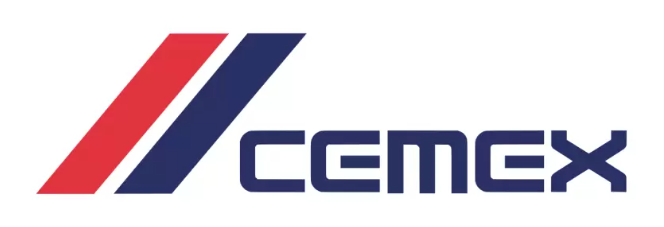My experience as a Data analyst in CEMEX

In this article, Jorge KARAM DIB (ESSEC Business School, Master in Strategy and Management of International Business (SMIB), 2024-2025) shares his professional experience as a Data Analyst and Data Management in CEMEX.
About the company
CEMEX is one of the leaders in building materials in the world. Their main products are cement, concrete, and aggregates (building materials in general). Based in Mexico, CEMEX reported a $15bn USD revenue in 2022, representing a 12% increase from the previous year. The company’s sales distribution, with cement, leading at 42%, followed by concrete at 33%, aggregates at 14%, and urban development at 11%, illustrates a balanced yet strategic emphasis on its core products and services.
Geographically, CEMEX’s influence spans major regions, with a substantial presence in Mexico, the USA, Europe, Asia, the Middle East, South America, and the Caribbean. Its operational footprint includes 64 cement plants, 1348 ready-mix concrete facilities, 246 quarries, 269 distribution centers, and 68 marine terminals, showcasing its capacity to serve a global clientele effectively.
At their beginnings, the company started with a single plant in Hidalgo, Mexico, called “Planta Hidalgo” under the direction of Mr. Lorenzo Zambrano, founder and CEO. Ever since then, the company adopted a philosophy of growing by acquisition. Great financial ratios, high volume of sales related to a big percentage of market share in Mexico, allowed CEMEX to do key strategic acquisitions throughout the next years that catapulted CEMEX into the international markets. Even with the financial crisis in 2008, they have been resilient and survived a big economic turmoil thanks to their high-quality products, service and cutting-edge advancements in digitalization, supply chain and data management.
Logo of the company

Source: CEMEX.
At the beginning of my career in the company, I started inside a program called “Digital Professionals in Development” (DPiD) which aimed to train and prepare 100 recently graduates to help the company boost the digital transformation in a period where CEMEX was going through a major digital transition of the commercial customer experience. Inside the program, I started as a Data Scientist inside the Global Data Analytics department, which allowed me to understand the different schemes of work, the hierarchical processes, capabilities and scope of the company and the institutional tools.
After working for the Global Data Analytics, another area that I’ve had experience, and where I’ve spent most of my time with, is the Commercial Development Area. Here, the intention is to keep the company at the state of the art in the commercial practices and keeping up with the technological trends of the world. My main duties have been regarding Data Management, on the development and management of advanced data analytics projects and master data quality, everything under the commercial umbrella.
My expertise at Data Management
Advanced Analytics
The way Advanced Analytics topics are managed is in a scheme by projects and in a cross-functional mode with other areas of the company like data architecture, supply chain, and more. According to the needs, or trends that anyone in the company points out, we assess the feasibility and benefit of approaching a new idea.
Some of the topics that we’ve been approaching have to do with increasing sales, enhance customer experience, increase Net Promoter Score (NPS), and improve the digital experience. One of the main projects that we’ve been developing is aligned with the retention of customers by predicting with service variables, historic volume trends, and machine learning the probability of a customer leaving the company. This effort requires to align with sales people of the different regions to set thresholds for the service variables and come to an agreement, consume information from the correct architecture source, and do the development of the machine learning model. As a final product, we’ve got the model embedded in a dashboard that the sales people can consult at any time, joined by monthly alerts sent to their email and their Customer Relationship Management (CRM) account.
Data Quality
Within the area, we’re managing the quality of the commercial information by managing and implementing actions to improve their completeness and accuracy. We acknowledge the importance of a high-quality level of information. Understanding that high data quality is the base of a successful forecast, project improvements, and in general for a company to become data driven.
As expected with a company that has presence in many regions of the world, the amount of information and different types of it can be overwhelming, a prioritization and starting point had to be put in place in order to overcome the overwhelming amount of information. Naturally, the first step was to define the attributes, and fields to be measured. After doing so, we had a clear picture of pain points throughout the regions and we prioritize the remediation of them. Lastly, as we don’t want to be continuously doing the cleaning effort, we want to maintain as much as possible the incoming information clean, in order to do so, it is necessary to put entry point validations to only allow clean information to come into the systems.
Required skills and knowledge
It is necessary to have the “hard skills” to work with the institutional tools, in CEMEX’s case, it is needed to know SQL, Power Bi, and Python (and/or R). Apart from the “hard skills” just mentioned, it is also necessary for “soft skills” to be known and/or developed, which would be to coordinate different areas and teams to work together, frequent results report, presentations to stakeholders, agile methodology to follow the progress of the project, and more.
What I learned
My main takeaways that I’ve had working at these projects is the importance of coordination with other areas, the help and expertise that you can get from relying with people with more experience would be as a shortcut for a lot of problems that may arise. Always ask for help whenever you feel that you might be stuck with an issue and be open to receive new ideas.
Financial concepts related my internship
EBITDA/Debt ratio
As mentioned earlier, part of the company’s philosophy is to grow by acquisition, hence the EBITDA/Debt ratio is crucial in order to get debt with lower interest rates, as the ratio is part of the key financials that banks and rating entities take into account when analyzing a company.
Return on Assets (ROA)
This financial indicator measures a company’s efficiency in generating profits from its assets. It is calculated by dividing the company’s net income by its average total assets. In other words, ROA indicates how effectively a company is utilizing its assets to generate earnings.
Why should I be interested in this post?
This post is with the intention that any student or alumni can have a glimpse of the structure of my professional experience in a company that is based in a different continent and would probably help them compare and see the main differences and similitudes between what is being done in Europe against what is being done in Mexico.
Related posts on the SimTrade blog
▶ All posts about Professional experiences
▶ Nithisha CHALLA AML Policies: Safeguarding Financial Integrity
▶ Chloé ANIFRANI My experience as an Asset Management Sales Assistant for Amplegest
Useful resources
CEMEX Official webpage in France (ICD)
About the author
The article was written in March 2024 by Jorge KARAM DIB (ESSEC Business School, Master in Strategy and Management of International Business (SMIB), 2024-2025).
